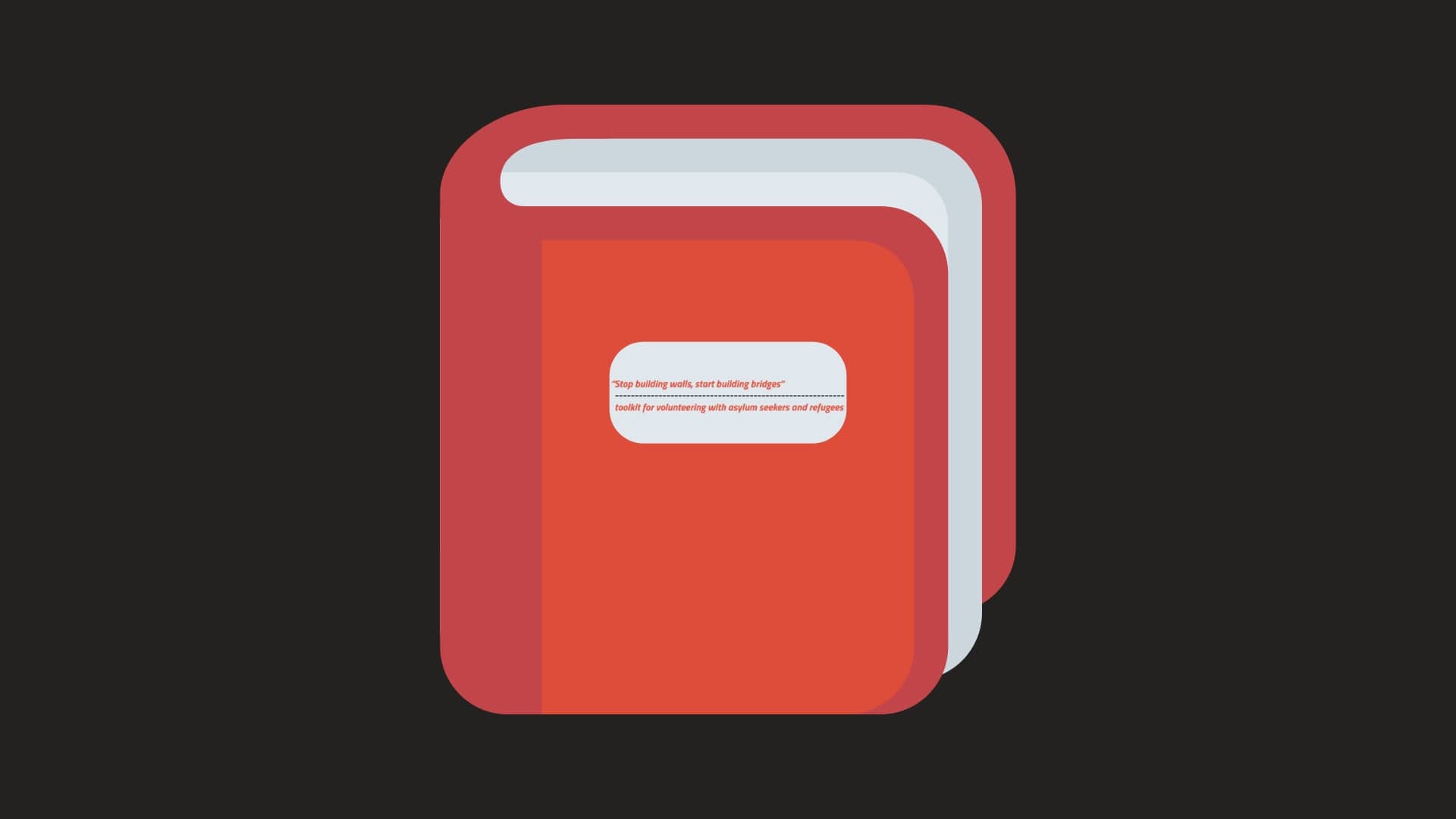
Building Bridges Toolkit
The Toolkit was designed to collect and share the know-how on voluntary projects involving people seeking or who have recently found refuge, as well as raising awareness on forced migration in general. The collection of guidelines, methods and case studies is non-exhaustive and should simply foster your own inspiration and support you in implementing projects on the topic. The creation of the Toolkit has been driven by the ever bigger need of the international SCI network to exchange best practices on projects in the field. It was coordinated by SCI Switzerland with the support of Útilapu Hungary. Its existence wouldn’t have been possible without the support of the Mercator Foundation Switzerland and the active contribution of the Building Bridges working group and a number of SCI branches.

METHODS AND TOOLS serve to support your work on the topic of refugees and migration with different target groups.
CULTIONARY
Intercultural game on minority portrayal
Time needed: 45 minutes to 2 hours
Objectives / aim: To work with the images we have of minority groups, to understand how stereotypes function, to generate creativity and spontaneous ideas in the group.
Level of Difficulty: easy
Resources needed:
- A list of things for participants to draw
- A flip chart and marker to record the scores
- Sheets of paper (about A4 size) and pens for the group drawings
- Sticky tape or pins to display the drawings
Number of participants: Any
What is your first image of somebody from another country? How do you translate it into a drawing?
Steps:
1. Ask participants to form teams of three or four people.
2. Tell the teams to collect several sheets of paper and a pencil and to find somewhere to sit so they are slightly isolated from each other.
3. Call up one member from each team and give them a word.
4. Tell them to return to their groups and to draw the word while the other team members try to guess what it is. They may only draw images, no numbers or words may be used. No speaking except to confirm the correct answer.
5. The rest of the team may only say their guesses, they may not ask questions.
6. When the word is guessed correctly tell the team to shout out.
7. Put the score up on the flip chart.
8. After each round ask the drawer to write on their picture, whether finished or not, what the word was.
9. Now ask the teams to choose another member to be the drawer. Make sure everyone has an opportunity to draw at least once.
10. At the end ask the groups to pin up their pictures so that the different interpretations and images of the words can be compared and discussed.
11. Debriefing and evaluation
• Do this in small groups (they can be the same teams). Ask participants to say if the activity was difficult and why.
• Then ask people to look at the drawings on the walls and compare the different images and the different ways people interpreted the same words.
• Ask them to say whether or not the images correspond to reality and ask the drawers to say why they chose particular images.
• Go on to ask where we get our images from, whether they are negative or positive and what effects that may have on our relations with the people concerned.

Tips:
- Suggestions for words to draw: Racism – Difference – Education – Discrimination – Anti-Semitism – Refugee – Conflict – European – A national (from the country where the activity is taking place) – A peasant – Poverty – A Muslim – A Homosexual person – An European – Equality – An HIV positive person – A Roma person (Gypsy traveller) – A Japanese – A Russian – An African – Human Rights – Media – A Tourist – A Foreigner – Solidarity – A Refugee – A blind person – Love – An Arab – A Moldavian.
- If you have a small group, ‘Cultionary’ can be played in one group; ask one person to draw in the first round, whoever guesses draws in the next round.
- Be aware that people who consider themselves poor artists may think this will be difficult for them. Reassure them that you are not looking for works of art and encourage everyone to have a go at being the drawer.
- This activity is likely to raise the most immediate and generalised stereotypes we have about other people, including foreigners or minorities. It is very creative and lots of fun. However, it is very important that the activity does not stop at the drawings but that the group reflects on the risks of stereotyping and, especially, where we get our images from.
- Everybody needs stereotypes in order to be able to relate to the environment and the people around us. All of us have, and carry stereotypes, this is not only inevitable but also necessary. Therefore any judgements about the stereotypes participants have should be avoided. What the evaluation and discussion should promote is that we need to be aware that stereotypes are just that: images and assumptions which often have little to do with reality. Being aware of stereotypes and of the risks that relying on them entails is the best way to prevent prejudice that leads to discrimination.
- It is interesting to note that we don’t usually have a stereotype image of people with whom we have little contact. For example, consider your own stereotype of someone from Slovenia, Moldova, San Marino or Bhutan? If we do have one it may simply be ‘that they are nice people’. We therefore suggest that you include in your list of words to be drawn, an example of at least one national who is a minority in your country and one who is not and with whom the group will have had little or no direct contact. Ask people to consider the differences between the stereotypes and the possible reasons for this.
- Another point to be raised in the discussion is where do stereotypes come from. The role of media, school education, the family and peer group may be analysed.
- The rules and ideas for what the teams will have to draw must be adapted to the national and cultural context of the group. The suggested words can and should be adapted. For example, if you plan to use images of nationalities, it may be important not to allow players to draw flags or currencies – that would be too easy! On the other hand, in order to prevent guessing by simply building on an association of sequences, it is important to alternate descriptions of a particular minority with other words relating to concepts, objects or people who have nothing to do with the topic e.g. if you plan to ask for the description of a Hungarian, a Rumanian and a French person, it is better to start with an Hungarian, followed by « racism » or « ’minority’ and only then a Rumanian, followed by « friend » before the French person. This will add variety, stimulate competition and make the activity a lot more fun

Links:
Reference / original source of the method:
All different – All equal, Education Pack
CONTRIBUTE!
You can share your experience, observations, tips and tricks, pictures etc. by uploading for instance a method or a case study to the Building Bridges Toolkit. As this Toolkit is a work in progress to which all involved parties are invited to contribute, we would also be very grateful for your support and contribution in order to inspire others to continue the work towards peace and intercultural understanding.
